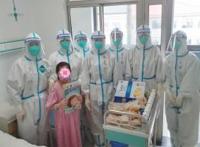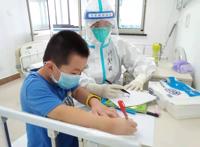《抗击新冠肺炎疫情的中国行动》白皮书(双语全文)(62)
2023-06-03 来源:旧番剧
采取有力措施坚决控制传染源。以确诊患者、疑似患者、发热患者、确诊患者的密切接触者等“四类人员”为重点,实行“早发现、早报告、早隔离、早治疗”和“应收尽收、应治尽治、应检尽检、应隔尽隔”的防治方针,最大限度降低传染率。关闭离汉通道期间,武汉对全市421万户居民集中开展两轮拉网式排查,以“不落一户、不漏一人”标准实现“存量清零”,确保没有新的潜在感染源发生。持续提升核酸检测能力,增强试剂盒供应能力,扩充检测机构,缩短检测周期,确保检测质量,实现“应检尽检”“即收即检”。湖北省检测周期从2天缩短到4-6小时,日检测量由疫情初期的300人份提升到4月中旬的5万人份以上,缩短了患者确诊时间,降低了传播风险。在全国范围内排查“四类人员”,以社区网格为基础单元,采取上门排查与自查自报相结合的方式展开地毯式排查。全面实行各类场所体温筛查,强化医疗机构发热门诊病例监测和传染病网络直报,实行2小时网络直报、12小时反馈检测结果、24小时内完成现场流行病学调查,及时发现和报告确诊病例和无症状感染者。加强流行病学追踪调查,精准追踪和切断病毒传播途径,截至5月31日,全国累计追踪管理密切接触者74万余人。Strong measures were taken to control sources of infection.The Chinese government defined a set of requirements: early detection, reporting, quarantine and treatment with a focus on the four categories of vulnerable people (confirmed cases, suspected cases, febrile patients who might be carriers, and close contacts). It had also taken measures to ensure that they were hospitalized, treated, tested or quarantined as appropriate. It has done everything in its power to reduce infections to the minimum.While keeping all its outbound routes closed, Wuhan carried out two rounds of community-based mass screening of its 4.21 million households, leaving no person or household unchecked and ruling out all potential sources of infection.The Chinese government redoubled efforts to increase the capacity of nucleic acid testing, supply more test kits, and approve more testing institutions. As a result, the testing period was shortened and the quality enhanced, ensuring that all those in need could be tested immediately and as appropriate. In Hubei Province, the testing period was shortened from 2 days to 4-6 hours, and the daily capacity expanded from 300 samples in the early stage of the epidemic to more than 50,000 in mid-April. Such advances made early detection and confirmation of infection possible and reduced the risk of transmission.To identify the four categories of vulnerable people, community grid-based screening was carried out across the country. All residents were requested to report their health condition on a daily basis. Community workers for their part visited households door-to-door to collect and verify this information. Temperature checking was made a routine at all places. Work was done to strengthen the monitoring and online reporting of cases identified at fever clinics of medical facilities – all such cases had to be reported online to higher authorities within 2 hours; their test results sent back to the reporting clinics within 12 hours; and on-site epidemiological investigation completed within 24 hours – so that confirmed cases and asymptomatic carriers would be identified and reported without delay. Epidemiological tracing and investigation were enhanced to precisely detect and cut off virus transmission routes. As of May 31, a total of more than 740,000 close contacts had been traced and handled as appropriate.
猜你喜欢
动漫推荐
免责声明:动漫番剧数据来源网络!本站不收费,无vip,请勿上当!
www.jiufanju.com-旧番剧


























